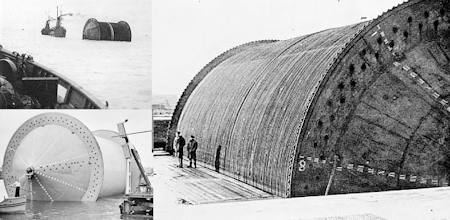Pipe-Line Under the Ocean (PLUTO)

The pipe-lines pumped fuel across two secret routes. The first, with a code-name of BAMBI, went from the Isle of Wight to Cherbourg in France, a distance of 70 miles.
The second, code-named DUMBO, connected Dungeness and Greatstone on Romney Marsh to Boulogne in, France, a distance of 30 miles.
It was the ingenious plan, amongst others, of Lord Louis Mountbatten to support troops after D-Day. The idea of PLUTO was that the required fuel would be moved across the country by pipe-line to the south east coast, including Dungeness and Greatstone, and then continuing the pipe line under the channel to France.
In total, 500 miles of pipeline connected the French coast across the Channel to England, and along overland pipeline to oil terminals near Liverpool.
The rationale for such a risky, technically complex project was that tankers full of petrol and oil were easy targets for German bombers, the coastline was riddled with underwater mines, and sending hefty ships to fuel Allied forces after their planned invasion of occupied France would bring more traffic to an already cluttered shoreline.
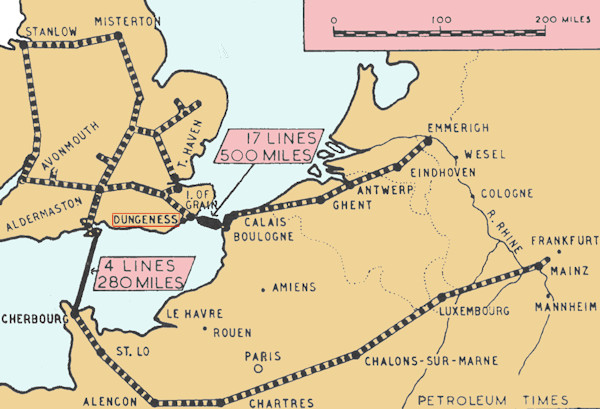
The main network of the PLUTO pipe-lines. The 500 miles of pipe-line from Dungeness
and Greatstone comprised 11 HAIS cables and 6 HAMEL steel pipes
Avoiding German detection of the underwater pipeline was essential. Although there were many moving parts, the British government managed to keep the project hidden from the Germans for nearly the entirety of the war. This was done in a few novel and very British ways.
This was specialy the case at Dungeness and Greatstone where the PLUTO pumping installations were within range of the German guns in France and subterfuge ie disguising the pumping stations as noraml houses, and the shingle, were used to good effect. see below
By October 26, 1944, the set of pipe-lines to Boulogne was deemed a success and in a few time, pipelines were transporting 3,000 tons of fuel a day.
By the end of the war that had increased to 4,500. An estimated 172 million gallons of fuel were supplied during the landings–all underwater and under the Nazis noses.
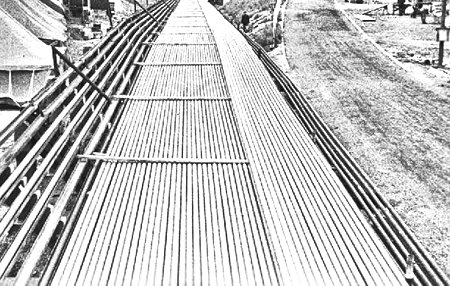
Pipe being stored in three quarter mile lengths
before being wound onto the 'Conundrum'.
- April 1942 Lord Louis Mountbatten, head of Britain's Combined Operations, conceived the idea of running a pipe-line under the English Channel to supply fuel when the Allies invaded Europe.
- April 1942 Clifford Hartley proposed that this could be done by constructing the pipe in one complete length and laid at sufficient speed to combat the strong Channel currents.
- May /June 1942 The first experimental pipe-line, codename HAIS, was made and tested. It was two inches in diameter and made of lead with layers of steel tape and heavy galvanised steel wire.
- April 1943 Trials of a flexible steel pipe, codename HAMEL, took place. HAMEL had been developed in case of failure of the HAIS cable.
- Summer 1943 In order to increase its capacity and to reduce the number that would have to be made, the HAIS pipe-line was increased in size from 2 inches to 3 inches, but with basically the same design.
- Summer 1943 Six Conundrums were built to hold and lay the cable.
- August/September 1944 Operation PLUTO from the Isle of Wight (BAMBI) up and running.
- October 1944 Operation PLUTO from Dungeness and Greatstone (DUMBO) up and running.
- Autumn 1946 Most of the redundant cable was recovered.
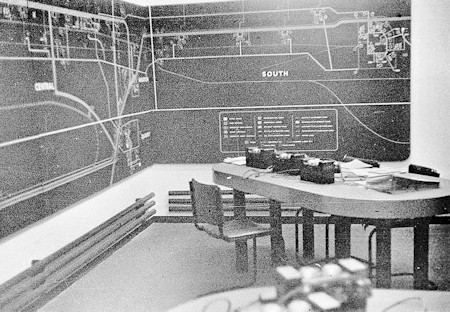
PLUTO control centre at Dungeness
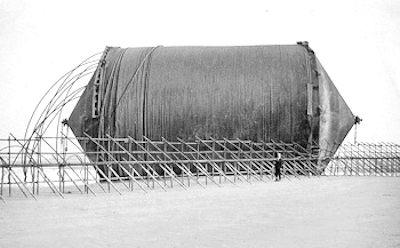
PLUTO 'Conundrum' on Greatstone Beach c1944
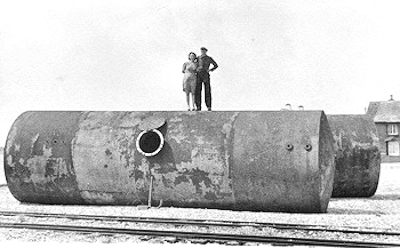
The tanks used for storing the fuel c1944
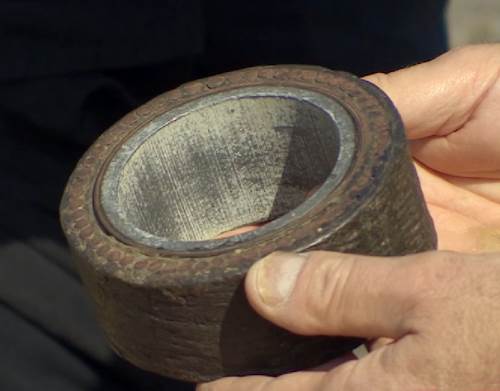
Cross section piece of PLUTO Pipe


PLUTO Pipe Laying
Operation PLUTO formally started on 12 August 1944 more than two months after D-Day. At Romney Marsh, the main pipeline came from Walton on Thames in Surrey, where it linked from the main UK pipeline network.
It ran from Appledore, across the Royal Military Canal and then followed the Lydd railtrack to the water tower at Dungeness. Here it divided into two, with one section going east to Greatstone and the other to specially constructed buildings near to the lighthouse at Dungeness.
Covering a distance of 70 miles it came across Romney Marsh and terminated in the Greatstone PLUTO 'bungalows' (see below) and Dungeness.
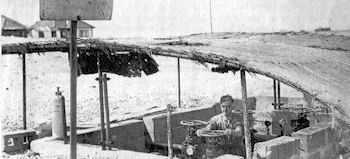
Control position on the beach c1944
The pipe-line under the sea was laid from drums each containing 30 miles of 3 inch steel pipe wound on it. Known as 'conundrums' they were over five times the height of a man, as shown in the picture. The drums were 30 feet in diameter and each drum weighed in at 250 tons and had a combined capacity to carry up to 60 nautical miles of fuel pipe. Over a million gallons a day was pumped via PLUTO to France.
To protect both the pipe line and the necessary pumping stations, all installations were disguised to prevent the Germans from identifying their proper use. Terminals and pumping stations in Dungeness and Greatstone were disguised as bungalows, gravel pits, garages and even an ice cream shop.
A few new buildings were erected , but mostly existing dwellings were adapted - a total of 27 seaside bungalows and houses on Dungeness and Greatstone.
At Dungeness, components for the PLUTO line were delivered along the Romney, Hythe and Dymchurch Railway.
DUMBO was the codename given to the pipeline that ran across Romney Marsh to Dungeness and then across the English Channel to France.
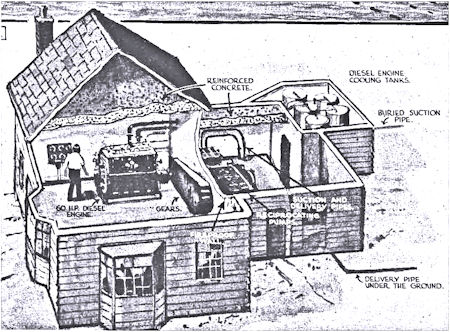
Artist's Impression of Inside of a PLUTO Pumping Station
The route of the pipeline can be traced in various places on Romney Marsh. Where the pipeline crossed water drainage ditches it ran above ground in a concrete case. Several of these can still be found.
There were five such installations sited in Leonard Road, Greatstone, three on the west side being used as pumping stations and two on the east side as staff quarters. From these installations the fuel was pumped the short distance across Greatstone beach and then onward to France via PLUTO.
As PLUTO pump stations, the buildings were single story and after the war they were converted for residential use, two since having a second story built. The bungalows are still referred to today as the 'PLUTO bungalows'.
Pluto Cottage at Dungeness was a pumping station built to look like a small house. It was a Bed and Breakfast but is now a private residence.
PLUTO was credited as being one of the factors that helped the Allies win the war.
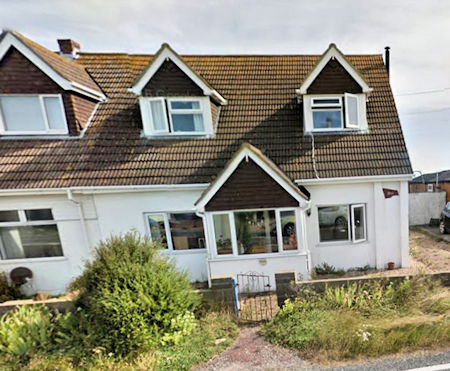
'PLUTO' B&B in Dungeness today
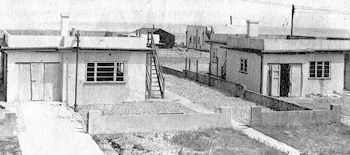
PLUTO pump houses Greatstone c1944
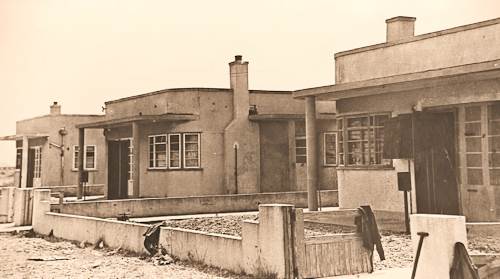
PLUTO Bungalows c1944
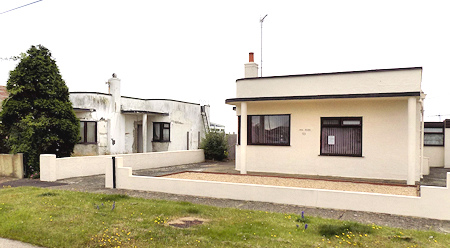
PLUTO bungalows in Greatstone today
- For more information about PLUTO please visit the Wikipedia and Combined Operations websites.
- The Romney Marsh Wartime Collection at Brenzett houses a small permanent display related to Pluto at Dungeness.
- A fully-restored PLUTO pump is on display with the story of the PLUTO project at Bembridge Heritage Society and Centre on the Isle of Wight.
- You can read the full story about PLUTO in PLUTO: Pipe-Line Under the Ocean - The Definitive Story
by Adrian Searle


